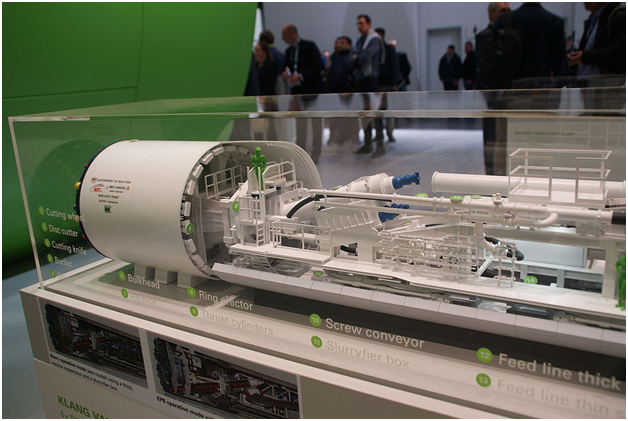Flexible screw conveyors transport materials in enclosed tubes much like pneumatic conveyors, and they can often be cost-effective alternatives. The best solution depends on several details.

Range
The maximum range of a flexible screw is from 50’ to 80’ depending on who you consult. Pneumatic systems can transport material considerably further. Whilst screw conveyors can be fitted in series, junctions are always problem-prone and require extra equipment.
Economics
Over short distances, flexible screws will usually be cheaper both in capital outlay and running costs. Pneumatic conveyors consist essentially of the same equipment regardless of the length of the tubing, which means it is a higher cost per foot over a short distance than a long one. Extra screws on the other hand bear a cost in direct proportion to increasing distance.
Flexibility
The flexibility of a flexible screw is limited. The tubes can curve, but this places strain on the motor. In contrast, pneumatic conveyors are truly flexible and navigate 90-degree bends with ease.

Adaptability
In some situations, it is desirable to install equipment inside conveying tubes. A common example is the use of magnetic plates to capture metallic contaminants from foodstuffs. These cannot be located inside screws, so they entail additional equipment, raising costs and introducing bottlenecks.
Containment
Screw-fed conduits are not as capable of preventing spillage as a vacuum conveyor.
Homogeneity
Some materials in pneumatic systems generate dust that has to be suppressed, and blended materials are prone to separation. These problems require countermeasures. Screws generally have an advantage in both respects, but they are not foolproof; lighter elements in a slurry can backflow. In fact, they resemble spiral separators.
Responsiveness
A motor-driven auger is more immediately responsive to speed control, which can be useful when used with screeners, grinders, or bag fillers. However, stopping and starting the system is not an ideal way to tackle these operations and there are continuous solutions. Designing how a materials transporting system will dovetail into your other production stages is a job for a conveying specialist such as http://www.aptech.uk.com/pneumatic-conveying/vacuum-conveying/.
Maintenance
Flexible screw conveyors require little routine maintenance. However, compared to multiple stage mechanical alternatives, the same is also true of pneumatic systems.
Durability
Screws are more susceptible to damage from abrasive or corrosive materials. Wear can become a problem with any mechanically moving part eventually.
